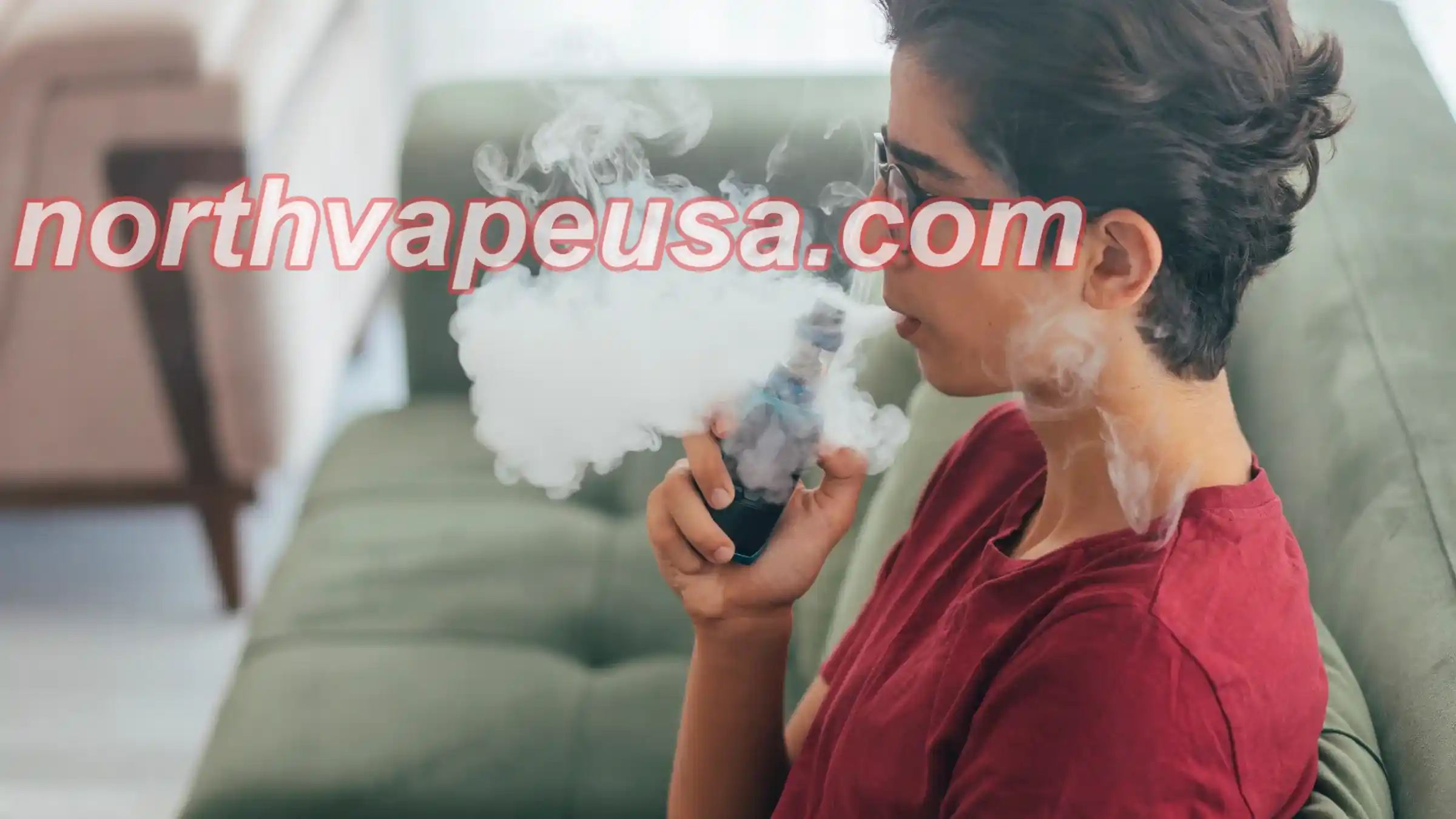The 2024 Vaping State-Friendly Index: Utah at the Bottom, California Near the Bottom!
The 2024 Vaping State-Friendly Index: Utah at the Bottom, California Near the Bottom!
The world of vaping is constantly evolving, and in the U.S., each state has its own unique set of rules governing e-cigarettes and vaping products. The 2024 Vaping Index, recently released by the Consumer Choice Center (CCC), shines a spotlight on the disparities across the country when it comes to vaping regulations. With a detailed analysis of all 51 states (including Washington D.C.), the report ranks each state based on their vaping policies and their level of friendliness toward consumers who use these products. As the vaping industry grows, these rankings could hold huge implications for the future of both the U.S. market and global trade in vaping products.
The Criteria Behind the Vaping Index
So how do we get to the final rankings? The 2024 Vaping Index considers five main factors to determine a state's score:
- Does the state treat vaping as a tobacco product?
If a state treats e-cigarettes and vaping products like regular tobacco products, it scores low. But if they don’t, that’s a win for vapers. - Are there restrictions on vaping flavors?
Some states ban all vape flavors, while others impose partial restrictions. States with no flavor bans earn the best scores. - Is there a state-level vaping product registration system?
Some states require a PMTA (Pre-Market Tobacco Application) registry, similar to what the FDA uses for tobacco products. States with more red tape and regulation score lower here. - Does the state impose additional taxes on vaping products?
If a state slaps extra taxes on vaping products, that drives up costs for consumers and businesses alike. States that don’t tax vaping products score higher. - Is online sales of vaping products allowed or restricted?
Some states have strict bans on the online sale of vaping products, while others allow it with no issue. States that allow online sales score high, while those that don’t get a lower rating.
These five categories are then tallied to give each state a score. States like Alaska, North Dakota, and Tennessee have scored exceptionally well for their lenient policies, while others—like Utah and California—have faced criticism for more restrictive regulations.
Top States for Vaping in 2024 🏆
A+ States: Alaska, North Dakota, and Tennessee
The stars of the show this year are Alaska, North Dakota, and Tennessee. These states earned A+ ratings because they’ve developed policies that promote public health while ensuring that adult consumers can still enjoy vaping as a safer alternative to smoking. Looking for more similar vapes? north vape flavors customizes the perfect experience for you!
Alaska, for example, doesn’t treat vaping as a tobacco product, meaning that vapers have more flexibility when it comes to purchasing and using products. The state also has no flavor bans and hasn’t imposed any extra taxes on vaping products. Similarly, North Dakota and Tennessee are equally friendly, offering a balanced approach where the health of the public is prioritized without restricting adult consumer rights.
In these A+ states, online sales of vaping products are also allowed, which is a huge win for consumers who want to buy customized products that suit their preferences. These states show that a well-regulated but open market can thrive, and they set an excellent example for the rest of the country.
A States: Arizona, Michigan, Mississippi, Missouri, Montana, Texas, Alabama, Arkansas, Oklahoma, and Wisconsin
States that earned an A rating also perform quite well in terms of vaping regulations, though some of them have minor restrictions that could be relaxed. For instance, Arizona, Texas, and Michigan have not implemented extreme flavor bans and allow adult consumers to continue enjoying a variety of vape products. While these states still have a few restrictions, such as minor taxes or regulations on flavored products, they’ve found a middle ground that allows for harm-reduction alternatives like vaping while still aiming to protect public health.
However, Missouri and Mississippi could do a bit more to create clearer rules around product quality and consumer rights. These states are still doing better than many others, but there's room for improvement.
The Struggle States: Utah and California 😓
Utah: Last Place with 0 Points
Unfortunately, Utah has earned the lowest score in the 2024 Vaping Index—a flat 0. Utah has long had some of the strictest vaping laws in the nation, and this year, it remains at the very bottom of the rankings.
Utah’s regulations include treating vaping products like tobacco, imposing severe restrictions on vaping flavors, and even requiring a PMTA registration system. The state also bans online sales of vaping products. Utah's justification for these draconian rules is the alleged "teen vaping epidemic," but the actual data doesn’t support the claim. Teen smoking rates have been dropping, and the rate of teen vaping has stabilized or even decreased in some cases.
However, Utah’s restrictive approach has had unintended consequences. Instead of protecting teens, these regulations have pushed adult vapers into the black market, where product quality and safety aren’t regulated. Additionally, the lack of legal access to high-quality vaping products could encourage people to return to smoking traditional cigarettes, which presents a far higher health risk.
California: Second to Last with 5 Points
Not far behind Utah is California, with a score of 5. The state has long been a champion in the fight against tobacco, but when it comes to vaping, its approach has been a bit more heavy-handed than necessary. California has implemented flavor bans, requires PMTA registration, and restricts online sales of vaping products. While these policies are meant to curb youth access to vaping products, they have also had negative consequences for adult consumers.
For instance, many California vapers who enjoyed a wide array of flavors have been forced to either turn to less reputable black-market sources or face limited options. These restrictions could also drive people back to traditional cigarettes, which are much more harmful. It’s clear that California’s policies have overstepped in certain areas, and many vapers feel the impact of these stringent regulations. How to find the best quality vapes? North 12000 Disposable Vape recommends the best for you!
The Growing Trend of Stricter Vaping Policies 📉
Looking at the 2024 Vaping Index compared to earlier years, there’s a noticeable increase in restrictions. For example, the number of states with flavor bans has jumped from 12 states in 2020 to 20 states in 2024. Similarly, the number of states with some form of online sales ban has increased from just 4 states to 18 states in just a few years.
Also, PMTA registries are becoming more prevalent. Thirty-two states have passed or are considering passing laws requiring vaping product manufacturers to register their products with the FDA’s PMTA system, adding yet another layer of regulation.
These changes reflect the increasing tension between public health advocates and the vaping community. While there’s no doubt that vaping presents risks—especially to teens—it’s also a proven tool for helping adult smokers quit. The challenge is finding a balance between protecting young people and ensuring that smokers who want to switch to vaping as a less harmful alternative aren’t punished.
The Benefits of Vaping: A Harm-Reduction Alternative 🌱
Vaping, when compared to smoking, has been widely recognized as a less harmful alternative for adults who are looking to quit smoking. While the long-term effects of vaping are still being studied, numerous health experts agree that vaping is far less risky than smoking traditional cigarettes.
Some of the key benefits of vaping include:
- Reduced Exposure to Harmful Chemicals: Traditional cigarettes contain thousands of harmful chemicals, many of which are carcinogenic. Vaping, on the other hand, doesn’t involve combustion, which means fewer toxic substances are produced.
- Improved Lung Health: While not risk-free, vaping has been shown to have far fewer harmful effects on lung health compared to smoking. Smokers who switch to vaping typically experience improvements in lung function and reduced respiratory symptoms.
- Helps Smokers Quit: Many smokers have successfully quit by switching to vaping. The ability to control nicotine intake and gradually reduce it over time has made vaping a valuable tool in smoking cessation.
- Fewer Secondhand Effects: Unlike secondhand smoke, which can cause serious health problems for non-smokers, secondhand vapor is far less harmful. Studies have shown that exposure to vapor presents a significantly lower risk to those around you compared to secondhand smoke.
The Future of Vaping: A Balancing Act ⚖️
As the 2024 Vaping Index shows, the future of vaping is up in the air. Some states are doing a great job of balancing regulation with freedom of choice, while others are restricting access to safer alternatives in an effort to combat youth vaping. Moving forward, the key will be to strike a balance that protects public health without punishing adult consumers who are using vaping to reduce harm.
The vaping industry needs to continue advocating for sensible regulation that allows for safe, adult use of products while keeping them out of the hands of teens. At the same time, policymakers must acknowledge the harm-reduction potential of vaping and find a way to regulate it that doesn’t push consumers into unsafe, unregulated markets.
It’s a tough road ahead, but with careful consideration and a focus on the evidence, the vaping community and regulators can find a way to create a healthier and more balanced future for all.

